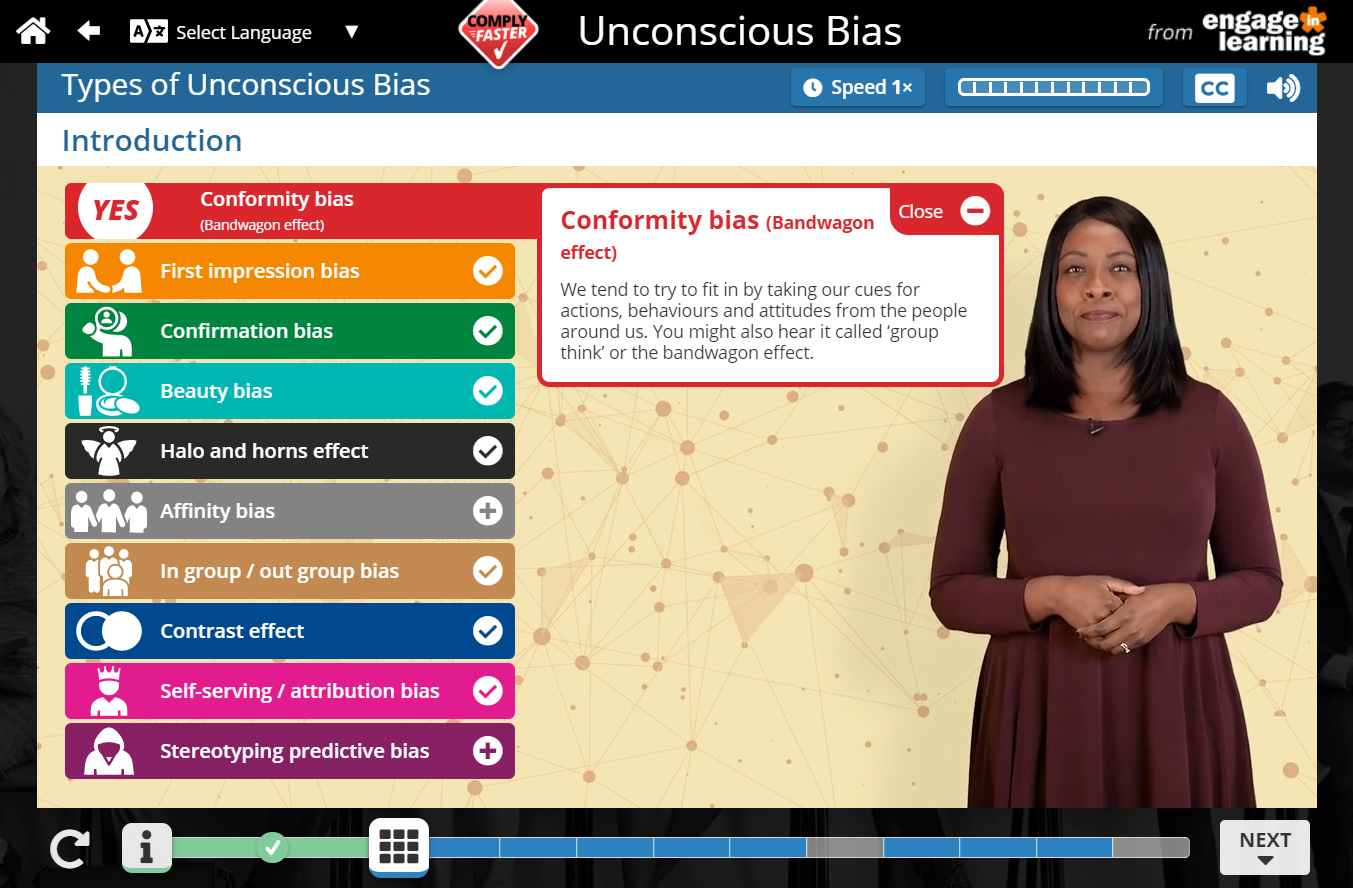
Engage in Learning helps remove Unconscious Bias in dealing with others
To help people make the most appropriate decisions when it comes to working with others – and/or recruiting, promoting and managing them – Engage in Learning has launched a video-based, interactive online learning programme on ‘Unconscious Bias’.
Engage in Learning’s Managing Director, Chris Horseman, explained, “To ensure that all workers give of their best in any and every situation, it’s important for their managers and colleagues to be completely – and truly – rational, objective and unbiased in their treatment of them.
“While there’s now various pieces of legislation that protect people from bias and prejudice – and, therefore, there are sanctions that can be applied to those who display conscious or unconscious bias in their dealings with others – the issue is more far-reaching and important that merely ensuring you avoid punishment.
“For organisational efficiency, effectiveness and profitability, it’s important that all workers are treated fairly, encouraged in their roles and given every opportunity to develop to the best of their ability,” Horseman continued. “That can only happen when bias of all kinds is eradicated in all interactions with these people.
“We can all display unconscious biases in our dealings with others – and these can easily affect our workplace decisions, especially when we’re in the role of recruiter and/or manager,” he said. “Unconscious bias can affect our views on who to promote, how to give feedback, how to conduct appraisals – in fact, all aspects of team dynamics and relationships.
“Moreover, since this bias is unconscious, we’re unaware of the adverse, detrimental effect that it’s having on our colleagues, ourselves and the organisation’s performance and profitability.”
To combat the effects of unconscious bias, the Engage in Learning online learning programme makes much use of interactive video to illustrate how unconscious bias can occur; offers some clues for how to spot when you’re indulging in unconscious bias, and explains what to do to combat and prevent unconscious bias.
“Although we may not be aware of our biases, we can reduce their impact,” Horseman commented. “The new Engage in Learning course covers a range of techniques that should help users design bias out of their workplace interactions.”
For further details of the Engage in Learning Unconscious Bias programme, visit https://www.engageinlearning.com/course/unconscious-bias/.


